

|
Saturday, November 11 Today it’s our turn for the morning tour with Bonnie.
We’re first in line for breakfast, gear up, and head out. The sky is
clear, and we see a lovely sunrise from the Polar Rover. The snow and
ice formations in the sunshine fascinate us as we bump along. We almost
forget to look for bears. We are out near Gordon Point, and not far off,
we can see the bright blue of open water. |
|
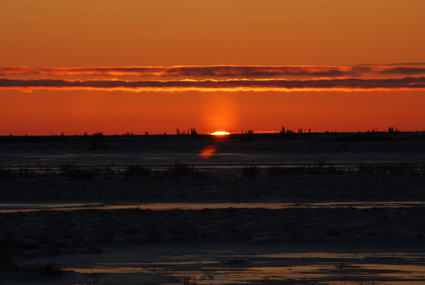 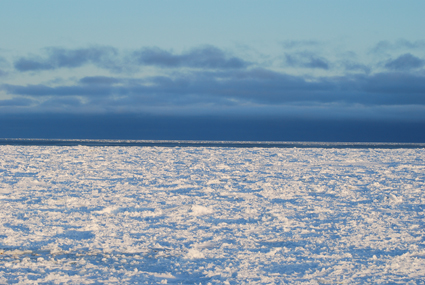 |
|
| In less than a half hour, we spot a male
among the rocks and willows. The sunlight shining through the edges of
his fur creates a stunning halo effect. He is beautiful. He comes over
to briefly check us out, then moves on. |
|
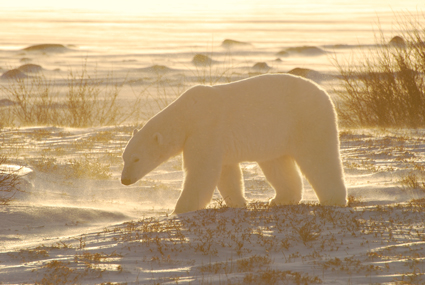 |
|
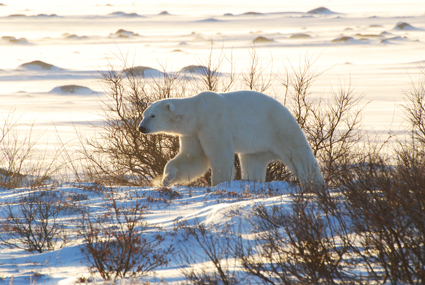 |
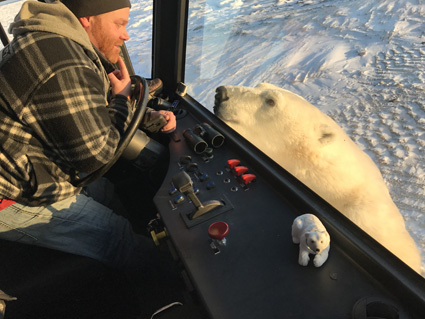 photo courtesy Giselle Jurkanin |
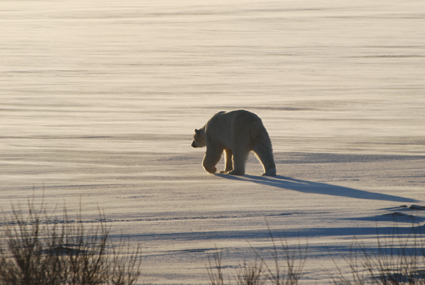 |
|
|
But while we are still watching him on the right, we spot another bear
out on the ice on the left. Soon first one then the other thrusts nose
in the air – they’ve smelled each other. |
|
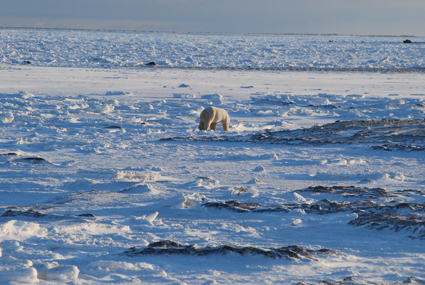 |
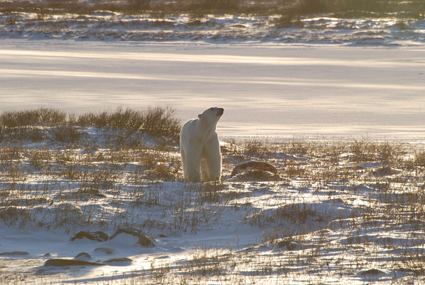 |
| Bear number 1 moves past the front of the rover toward bear number 2. They approach, touch noses. And then the show begins! | |
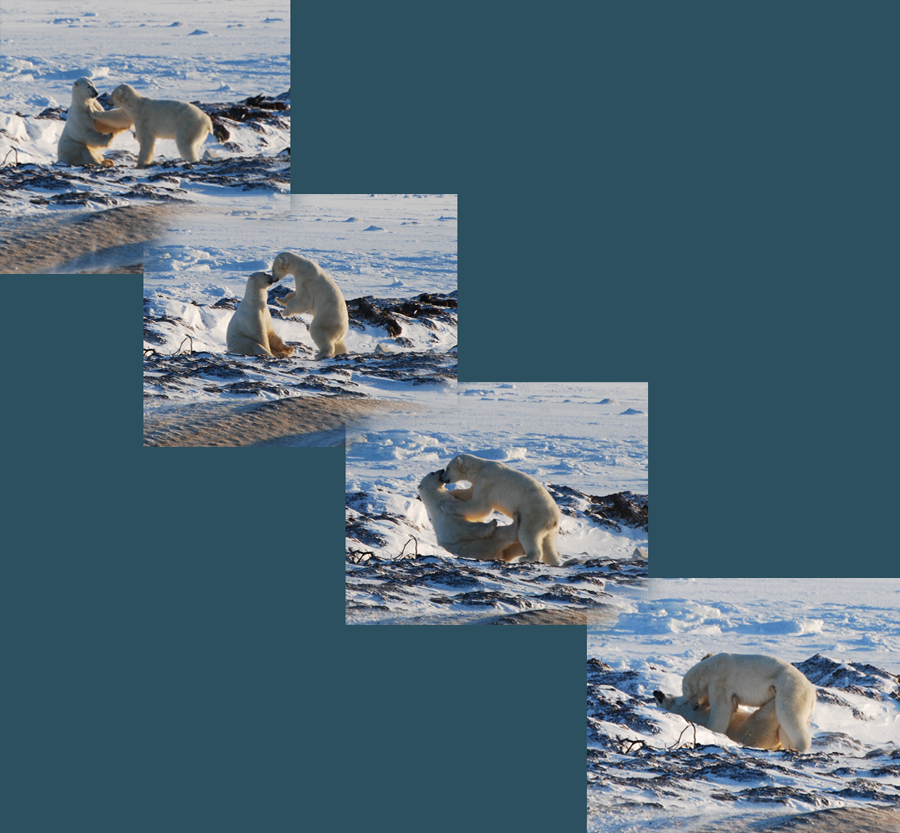 |
|
|
When they’re out on the sea ice and the females are in estrus, male
bears fight violently for the right to mate. Some bears even die, after
a serious wound or a broken jaw that makes it impossible to hunt or eat.
But what they’re doing now is sparring, and it’s just pretend. They’re
bored, and they’ve been inactive for months. They’re playing, getting
back in shape, practicing their moves. Actually, most of the time it
looked like dancing bears rather than fighting bears. |
|
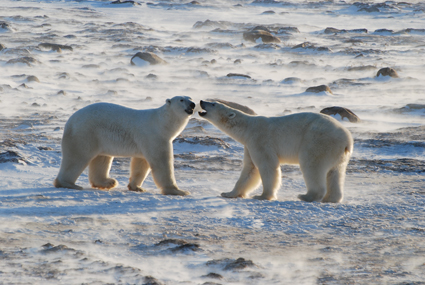 |
 |
|
|
|
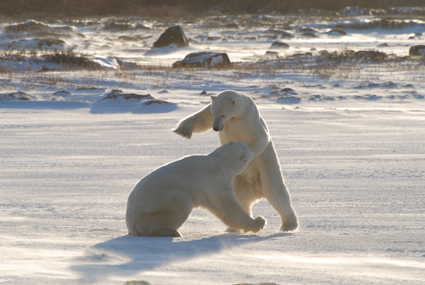 |
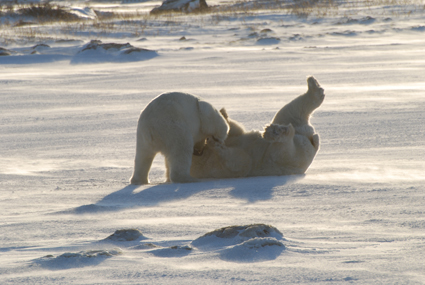 |
|
We watch these two bears spar for over an hour. They go at each other
for 10 minutes or so, then break off and mill around. Then they start
again. They do this over and over. Both draw blood, around the neck. We
start wondering how they can expend so many calories when their reserves
are so low. |
|
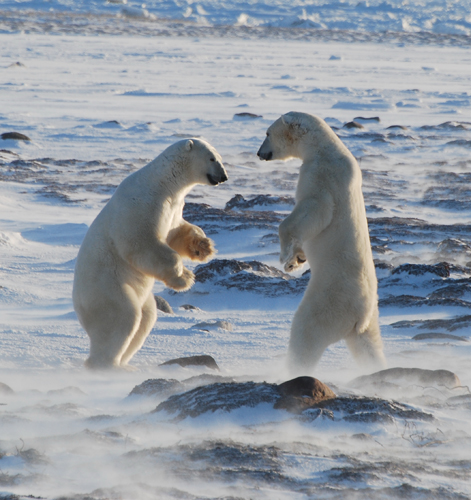 Notice the blood below the ear of the bear on the right. |
|
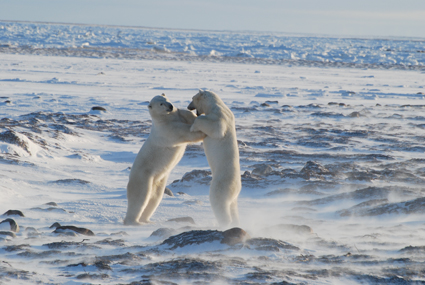 |
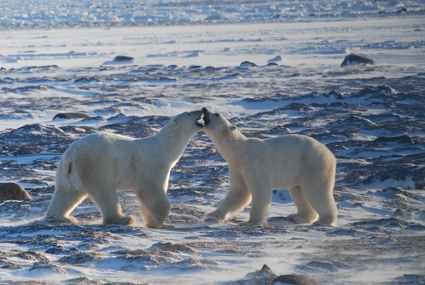 |
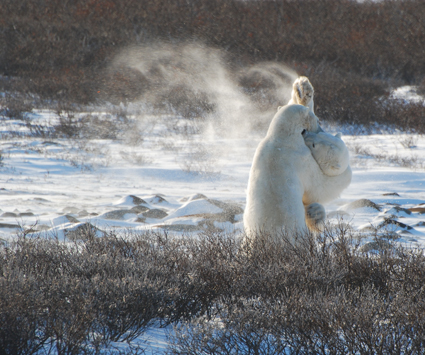 |
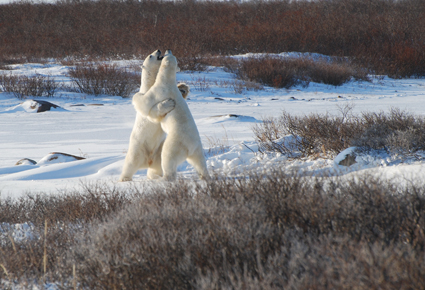 |
| Finally, they both start rolling in the
snow, burying their noses, rolling belly up and wiggling around. They’re
either cooling off or cleaning the blood off their fur or both. They lie
a few feet apart, resting. |
|
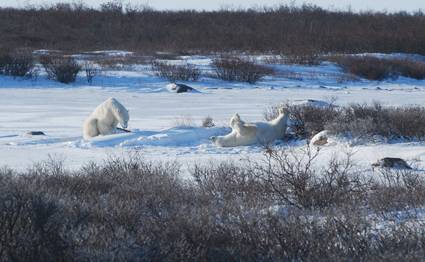 |
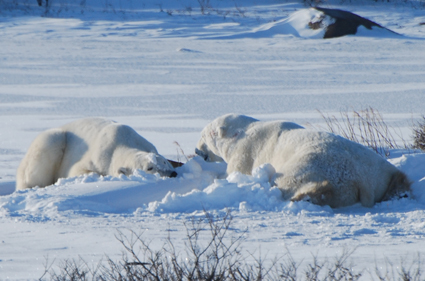 |
|
Enter the raven! |
|
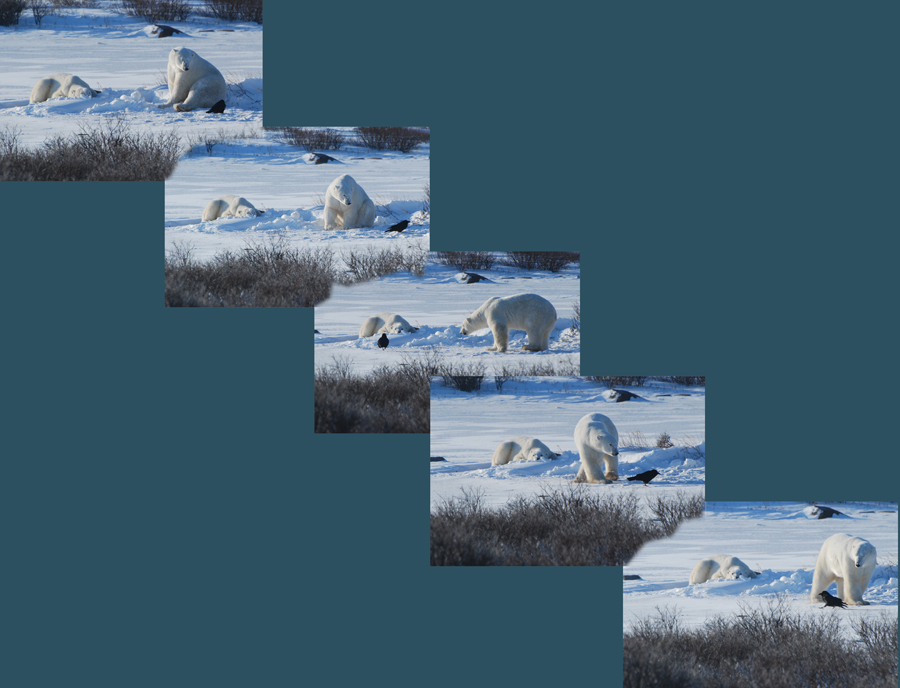 |
|
| The raven lands just a few feet away from one of the bears, who immediately jumps up. For at least five minutes, that silly raven hops around and over that bear, as if taunting him. The bear goes this way and that, following the raven. Bonnie is almost beside herself: "That raven is asking for it. I can’t believe that bear’s not getting the raven." The other bear just lies there, eyes following the action, as if thinking, "I can’t believe you have the energy for that." Bonnie thinks the raven may be getting seeds shaken loose when the bears wallowed around. Finally the raven flies off, unharmed. | |
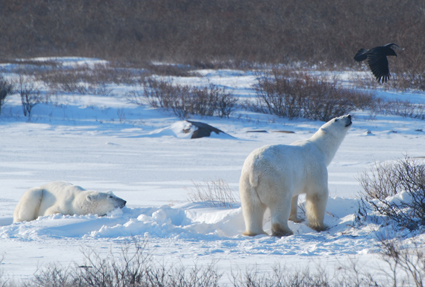 |
|
|
The bears get up and spar again as we slowly roll away. By this time,
more than two hours since we spotted the first bear, every Polar Rover
and Tundra Buggy out there has gotten word of the sparring bears, and we
count 11 vehicles. What’s truly amazing is that the drivers so adeptly
"half-circle the wagons" that when the vehicles are stopped, no camera
shot has a vehicle in the background. |
|
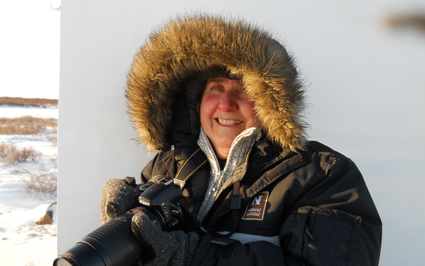 A very happy photographer! |
|
| As we returned to the lodge, we saw a visitor. | |
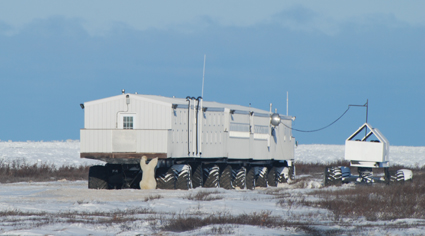 |
|
|
We couldn't understand why there wasn't a crowd of
people on the deck. Once inside, we learn that the other group has had
a pretty interesting morning as well. That bear hung around for
hours. Lots of selfies-with-bear. They also saw a silver fox. |
|
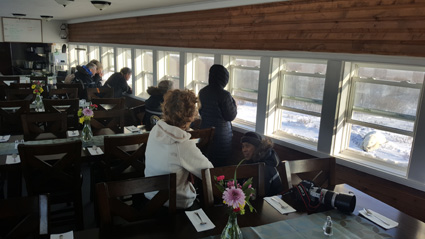 photo courtesy Eddy Savage |
|
|
After lunch it’s our turn for showers. Then we gather in the lounge with Bonnie. Instead of a formal presentation, she just talks, telling stories about Churchill and their bears, how it used to be when she was growing up, how she and her husband starting taking people on tours in old buses, her brother’s experiences as a conservation officer (translation: bear policeman), the bear jail, how she became a NatHab guide. The afternoon group returns home slightly disappointed. They spent over an hour hanging out with our two bears, who never sparred. The show they gave us must have worn them out. But mom and cubs made an appearance. |
|
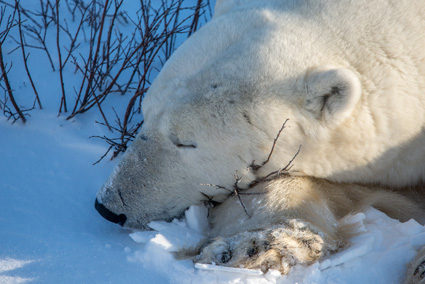 One of the sparring bears, sleeping it off this afternoon photo courtesy Eddy Savage |
|
|
Shortly before dinner, someone spots half a dozen willow ptarmigans in the low brush outside the lodge. We all grab binoculars. The birds are tough to see because their white feathers are perfect camouflage in the snow. After dinner, Bonnie presents a slide show of her own photographs of birds and plants of the Churchill area. An expert birder, she wrote a book on the birds of Churchill. She’s apparently just as knowledgeable about the plant life. We consider ourselves very lucky to have drawn her as our guide. Her first-hand experience and Eddy’s detailed scientific explanations make a great combination. The wind blows hard, whistling past the lodge, during
our last night here. |
|
|
Continue the journey - day 4 at Churchill Return to Long Shadows Home Page |
|